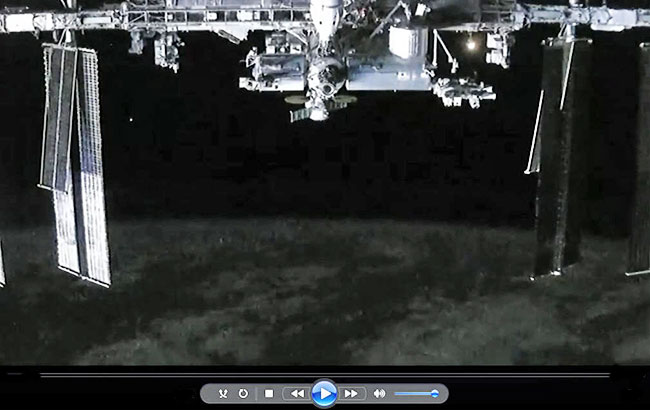|
December 16, 2024
seen from the International Space Station shortly after undocking on Dec. 16, 2024. (Image credit: SpaceX)
Dragon has come
home...
SpaceX's Dragon cargo capsule splashed down off the Florida coast at 1:39 p.m. EDT (1839 GMT) today (Dec. 17), a day after undocking from the International Space Station (ISS).
CRS-31 returned to Earth with thousands of pounds of equipment and experiment specimens from ongoing microgravity research aboard the space station.
Dragon is currently the only ISS cargo spacecraft capable of returning equipment and experiments safely to Earth.
The other two operational freighters, ...face a fiery atmospheric incineration, burning up during reentry, along with whatever waste from the space station is packed aboard them.
Video: click above image
The CRS-31 Dragon launched to the ISS from NASA's Kennedy Space Center (KSC) in Florida on Nov. 4, riding a SpaceX Falcon 9 rocket to low Earth orbit.
The spacecraft rendezvoused with the orbital laboratory a day later, delivering about 6,000 pounds (2,700 kilograms) of science and supplies for the Expedition 71 astronauts aboard.
Among those astronauts are NASA's Butch Wilmore and Suni Williams, who originally launched to the station on the first crewed flight of Boeing's Starliner spacecraft in June.
Complications with Starliner turned an eight-day mission into an eight-month stint aboard the ISS for the two astronauts.
NASA eventually decided to return Starliner to Earth uncrewed:
At the time of Starliner's launch, the ISS was in need of a pump replacement for its urine processing system, which Wilmore and Williams were tasked with delivering.
To make room aboard the spacecraft, however, the two astronauts were forced to leave their own luggage behind, including their change of clothes and other personal items.
Two other cargo missions preceded CRS-31 after Wilmore and Williams' arrival:
However, every cargo mission brings welcome goods to the station's entire crew, with a crowd-favorite supply of fresh fruits and vegetables.
Among the cargo CRS-31 delivered to the ISS last month were fresh food, research equipment, maintenance supplies and personal items to help sustain the orbiting astronauts.
NASA will retrieve the CRS-31 Dragon spacecraft relatively quickly after splashdown, reaping the benefits of any experiments in need of quick attending following atmospheric reentry.
These experiments will be transported to NASA's Systems Processing Facility at KSC, where scientists are able to continue research in the post-microgravity environment.
Dragon's ISS undocking was originally supposed to occur on Dec. 6, but bad weather in the splashdown zone pushed it back repeatedly.
|



